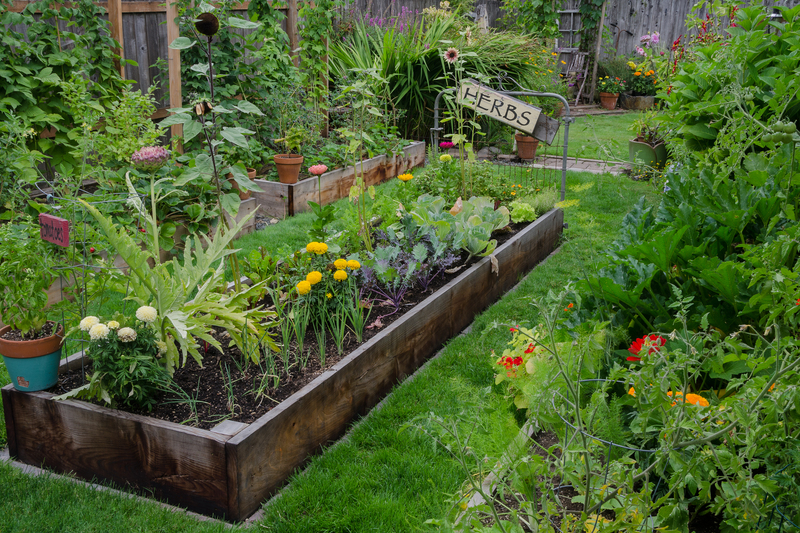A Step-by-Step Plan to Prevent Summer Drought Damage to Your Lawn
Summer droughts can be harsh on your beautiful green lawn, turning it brown, patchy, and lifeless. But with the right care and preventive strategies, you can preserve your grass's health and appearance, even in the most challenging weather. In this comprehensive guide, discover a step-by-step plan to prevent summer drought damage to your lawn, ensure its longevity, and keep your yard lush all summer long.
Understanding Summer Drought Stress on Lawns
Before diving into prevention methods, it's essential to understand what drought stress is and how it affects your lawn. Drought stress occurs when your grass roots don't receive enough moisture to sustain healthy growth. Extended periods of high temperatures, low rainfall, and insufficient watering can result in the following:
- Browning and Thin Lawns: Grass may turn brown and sparse as it goes dormant to survive the lack of water.
- Weaker Roots: Shallow roots make grass vulnerable to heat and pests.
- Increased Weeds and Pests: Weak or stressed lawns are easily invaded by weeds and insects.
Prevention is always better than cure. By actively preparing your lawn for summer and taking proper care throughout the season, you can significantly reduce the chances of drought damage and maintain a beautiful yard.

Step 1: Choose the Right Grass Variety
Not all grasses are made equal when it comes to drought resistance. Some species have deeper roots and better survival instincts for hot, dry climates. When establishing or overseeding your lawn, consider:
- Bermuda grass: Highly drought-resistant, ideal for sunny and hot regions.
- Zoysia grass: Tolerates drought and heat; grows slowly but forms a dense carpet.
- Buffalo grass: Thrives with minimal water and can withstand prolonged dry periods.
- Fescues (Fine or Tall): Cool-season types with good drought tolerance, especially tall fescue.
Consult your local garden center or cooperative extension for advice on the best drought-tolerant grass varieties for your region.
Step 2: Prepare Your Lawn Before Summer Starts
Preparation is key to preventing summer drought damage to your lawn. Start your preparations in late spring, before the extreme heat arrives:
Aerate the Soil
Aeration is the process of poking holes in the soil, allowing air, water, and nutrients to reach grass roots. This helps the roots grow deeper and fosters drought resilience. Use a core aerator for large lawns or a manual aerator for smaller spaces. Aim to aerate once a year, preferably in the spring or fall.
Apply Organic Compost
Top-dress your lawn with a thin layer of organic compost after aerating. Compost improves soil structure, increases moisture retention, and provides essential nutrients that strengthen grass for upcoming droughts.
Check & Fix Irrigation Systems
- Inspect Sprinklers: Ensure all sprinkler heads work correctly, are not clogged, and provide even coverage across your lawn.
- Adjust Timers: Set watering times for early morning or late evening to minimize evaporation.
- Test Soil Moisture: Use a screwdriver or moisture meter to make sure water penetrates 4-6 inches deep.
Step 3: Maintain Proper Watering Habits During Drought
Watering techniques can make or break your efforts to prevent summer drought damage. Smart irrigation is essential:
- Water Deeply and Infrequently: Soak the soil to encourage deep root growth; avoid daily shallow watering, which leads to weak roots.
- Time It Right: Water early in the morning (before 9 a.m.) to reduce water loss from evaporation and fungal risks.
- Follow Local Guidelines: Adhere to any watering restrictions in your area.
The goal is to provide about 1 inch of water per week, including rainfall. Use a rain gauge or place several empty tuna cans around your yard to monitor how much you're watering.
Step 4: Raise Mower Blades and Adjust Mowing Techniques
During summer, avoid scalping your lawn. Keep grass taller to help its roots survive drought conditions:
- Set your mower height to 3-4 inches for most grasses.
- Never remove more than one-third of the grass blade at each mowing.
- Leave grass clippings on the lawn (unless clumps form) to conserve moisture and recycle nutrients--this is called grasscycling.
Taller grass shades the soil, reduces evaporation, suppresses weeds, and helps develop deeper root systems that are more drought-resistant.
Step 5: Feed Appropriately, But Avoid Overfertilizing
Fertilizing your lawn properly will bolster its strength to cope with drought, but more isn't always better--excess fertilizer can scorch grass during dry, hot weather.
- Apply a slow-release fertilizer in late spring or early summer (preferably before peak drought).
- Avoid fertilizing during extreme heat. Wait until temperatures cool down or rainfall is expected.
- Opt for organic fertilizers which improve soil health and water retention over time.
Always follow label directions to prevent burning your lawn.
Step 6: Mulch to Lock in Moisture
Mulching is not just for garden beds--it's a valuable tool for preventing summer drought stress on lawns as well:
- Mulch around trees and garden beds: This keeps roots cool and reduces competition for water between grass and larger plants.
- Leave grass clippings when mowing: They act as a natural mulch, reducing water loss from the soil.
- Compost as top-dressing: A thin layer of finely screened compost each spring and fall boosts moisture retention across the surface.
Step 7: Watch for Signs of Drought Stress & Take Prompt Action
To successfully prevent summer drought damage to your lawn, monitor for trouble signs like wilting grass blades, footprints that remain visible, and bluish-gray patches. Early intervention can make a big difference:
- Increase water: If drought signs appear, water deeply as soon as possible within local restriction limits.
- Spot treat problem patches: Focus extra attention on high-use or sunny areas that dry out faster.
- Reduce foot traffic: Limit use of the lawn during extreme heat or stress periods.
Step 8: Embrace Smart Lawn Alternatives (Optional)
If severe summer droughts are the norm in your area, you may want to consider alternatives to traditional lawns for at least some parts of your yard:
- Xeriscaping: Replacing grass with drought-tolerant groundcovers, mulches, and native plants that require much less water.
- Artificial turf: Offers a green look with zero water usage, but gets hot in direct sun and doesn't benefit pollinators.
- Ornamental grasses and wildflowers: Native varieties often need less water and are easier to maintain through dry spells.
Step 9: Post-Drought Lawn Recovery Strategies
If your lawn suffers despite your best efforts, don't give up hope. Lawns can recover from summer drought damage with time and care:
- Continue deep watering: Once normal rainfall resumes, maintain a regular watering schedule.
- Overseed thin spots: Repair dead patches by overseeding with drought-tolerant varieties in early fall.
- Aerate and fertilize: Aerate compacted soil and apply a gentle, slow-release fertilizer to revive root systems.
- Patience is key: Avoid heavy traffic and harsh chemicals while your lawn recuperates.

Bonus Tips for Drought-Proofing Your Lawn
Here are some extra strategies to help prevent summer drought damage to your lawn and keep your turf greener for longer:
- Install rain barrels: Collect rainwater for lawn and landscape irrigation, especially useful during water restrictions.
- Reduce lawn size: Minimize grassy areas and swap for mulched beds or patios to lower maintenance and watering needs.
- Use wetting agents: These soil conditioners help water soak into dry, compacted areas.
- Shade where possible: Planting trees or shrubs strategically can provide relief from midday sun.
Key Reminders to Protect Your Lawn from Summer Drought
- Choose and plant drought-resistant grass species whenever possible.
- Maintain healthy soil with aeration and organic amendments.
- Follow smart watering, mowing, and mulching practices.
- Monitor your lawn during heatwaves, and act quickly if stress appears.
Conclusion: Enjoy a Lush, Resilient Lawn Despite Summer Drought
Preventing summer drought stress and damage to your lawn isn't only about watering -- it's about adopting holistic lawn care techniques that enhance root health, soil quality, and overall grass resilience. By following these step-by-step guidelines, you can proactively avoid brown, damaged turf and keep your lawn looking vibrant, even through the harshest months.
Remember: Choose the right grass, prepare and maintain healthy soil, water wisely, adjust mowing practices, and stay vigilant when drought threatens. With a little advanced planning and the right strategies, your lawn will withstand summer's toughest challenges and stay the envy of the neighborhood.
Ready to start? Take your first step now and set your lawn up for a green, gorgeous summer!